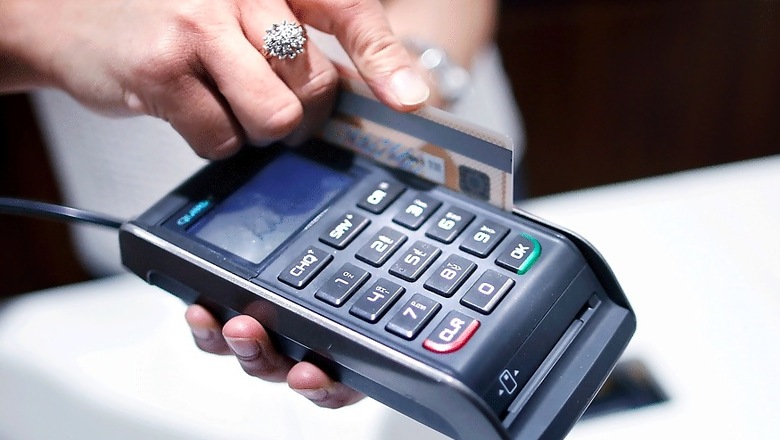
views
Mumbai: Facing flak from various quarters, especially card-acquiring banks, the Reserve Bank on Wednesday clarified that it lowered MDRs after detailed talks with all stakeholders to achieve the twin objectives of promoting less-cash economy and ensure all stakeholders do a profitable business.
The Reserve Bank also clarified that no merchant will at any level will charge merchant discount rates (MDRs) to consumers and the new rates are applicable only on debit card transactions and not credit cards. The Central bank, on December 6, rationalised MDRs for debit card transactions at merchant terminals. Accordingly, it set differentiated MDRs, prescribing separate caps for small and large traders.
MDR is the rate charged to a merchant by a bank for providing debit and credit card services wherein three key parties - the card issuing bank, the card acquiring bank (which sets up points of sale terminals or swipe machines) and merchants - who share the charges at a mutually agreed rates. The acquiring banks though get the lions share since all the investment is borne by them.
"We've rationalised MDRs after extensive consultations with all stakeholders - issuing and acquiring banks, and merchants. The new rates are aimed at achieving the twin objectives of promoting card payments especially in small towns, and also to ensure that all stakeholders, especially the acquiring banks, do not lose too much," deputy governor B P Kanungo told reporters at the RBI headquarters this evening. He further said they also learnt that card transactions were happening mostly at large stores. "So to push digitisation, especially in small towns, we had to ensure that small merchants are encouraged to accept card payments, and at the same time, ensure that banks which provide this service should not be making losses," he explained.
He also clarified that new rates are lower than the pre-note ban rates, and are only marginally higher than the post-note ban rates which anyway was only a temporary measure as the RBI had put out the discussion paper on MDR in March 2017.
Ruing the flurry of incorrect/incomplete information doing the rounds, he said all the top five banks HDFC Bank, ICICI Bank, SBI, Axis Bank and Bank of Baroda - which together control almost 75 percent of the cards business, are losing money and if this continued, they will have no incentive to pump money into technologies like this. Stating that no market is perfect, Kanungo said even in some developed markets, the regulator caps the MDR while in some it is left to the market forces.
When asked whether RBI will cap the interchange charges, he said, "Probably over a period of time as this is the most critical component in the entire process. "As in some markets, we can also look at controlling the interchange charge, which is the most important element in the whole process. But as of now there is nothing is on our table in this regard," Kanungo said.
Justifying the move, he further said, "This (capping MDRs as per merchant volumes) is a case of positive intervention. Because no market is perfect. Also, most banks charge much less than the permitted rates thanks to the spike in volumes."
He also said the new rate structure is beneficial to all concerned as it is simple and a single rate. Also there were recurring complaints from small merchants that the banks were charging a flat 1 percent from them for all transactions, he said.
On why the lower cap of Rs 20 lakh business volume was set for merchants, he said this is just a reflection of the lowest volume for mandatory GST registration.
It can be noted that the RBI had on June 28, 2012 capped MDR at 0.75 per cent of the transaction value for under Rs 2,000 transactions and at 1 per cent for above this amount. Following the note-ban last November, this was abolished between November 9 and December 31, 2016. But from January 1, 2017 the same was restored but at a lower rate of 0.25 per cent for up to Rs 1,000 transaction value, 0.50 percent for under Rs 2,000 and 1 percent for those above this
amount, he said.
As per the latest notification, MDR charges for small merchants with an annual turnover of up to Rs 20 lakh is fixed at 0.40 percent with a cap of Rs 200 per transaction. For accepting payments via QR code based transactions, the charge will be 0.30 percent subject to a cap of Rs 200 per transaction. In case the annual turnover of a merchant is over Rs 20 lakh, MDR will be 0.90 per cent with a cap of Rs 1,000 per transaction. For QR code transaction, it will be 0.80 percent with a similar cap, the RBI had said, adding the new charges will be effective January 1.



















Comments
0 comment